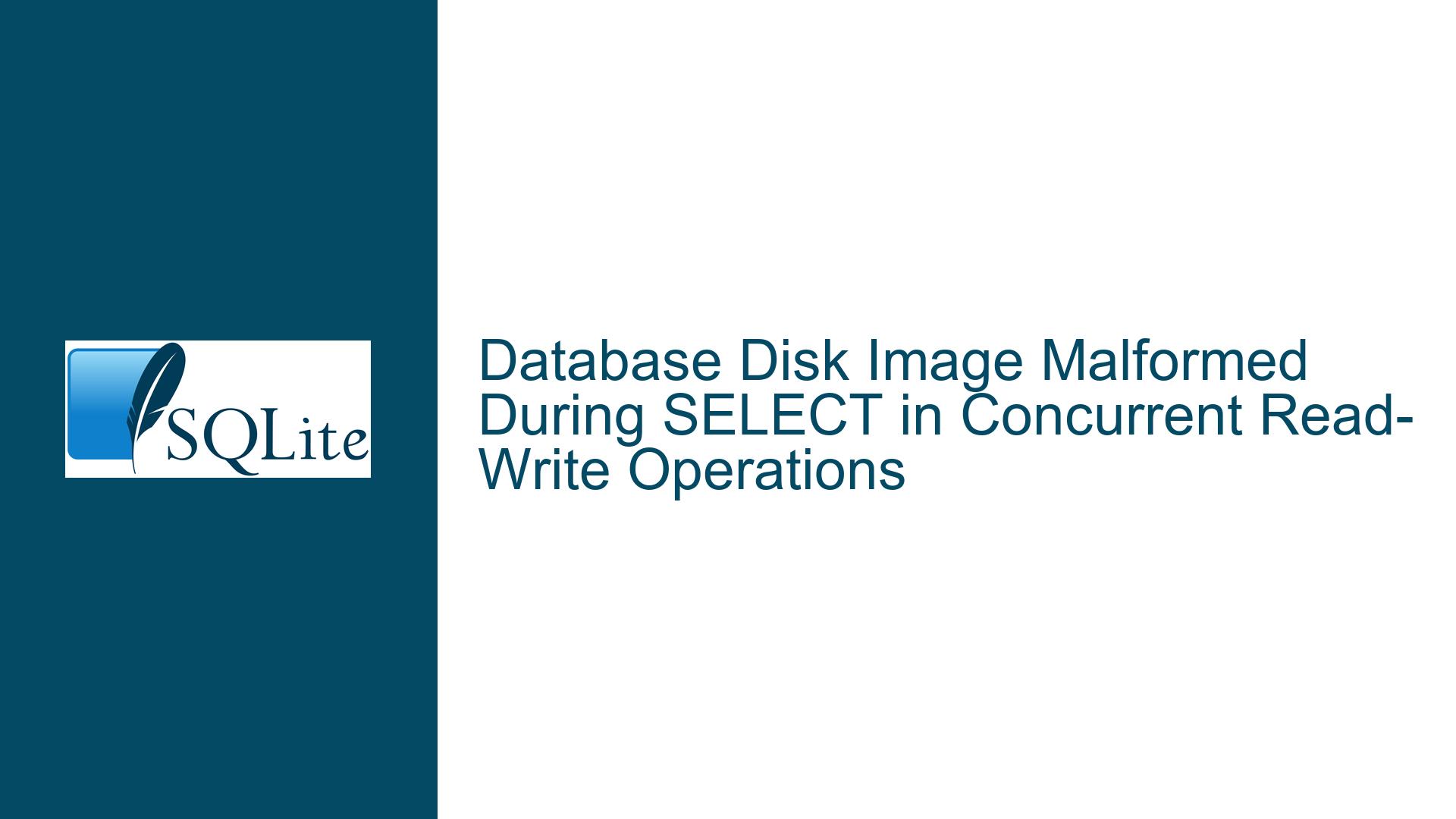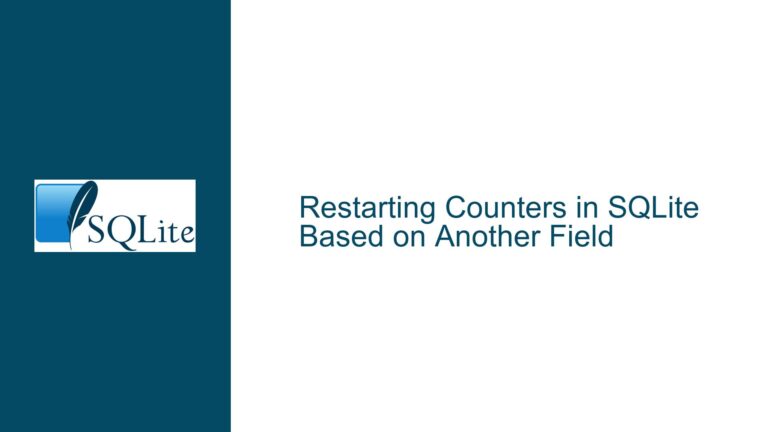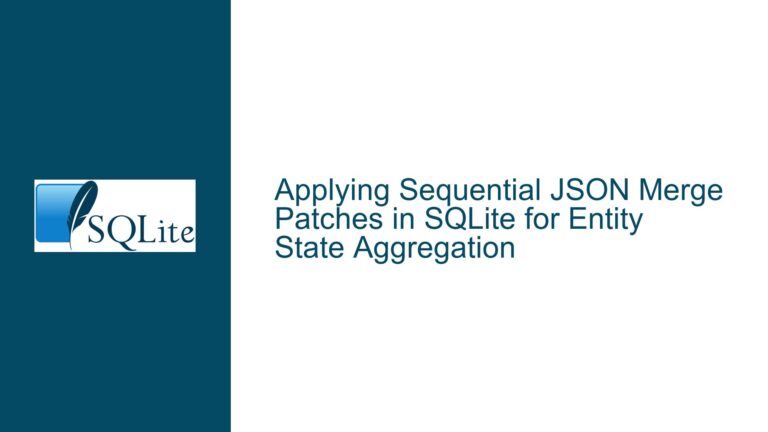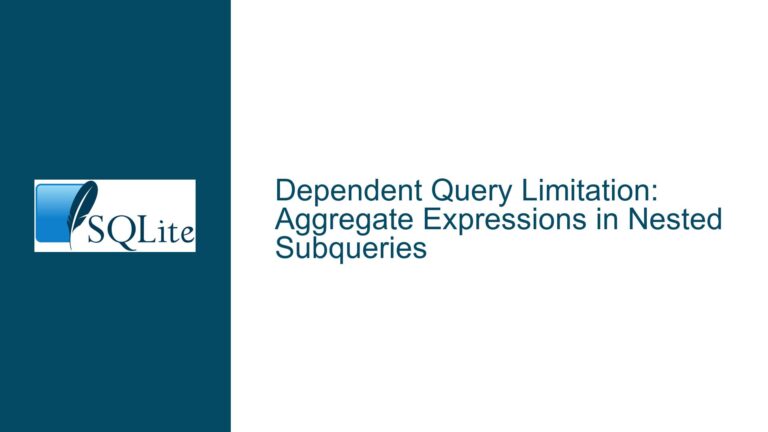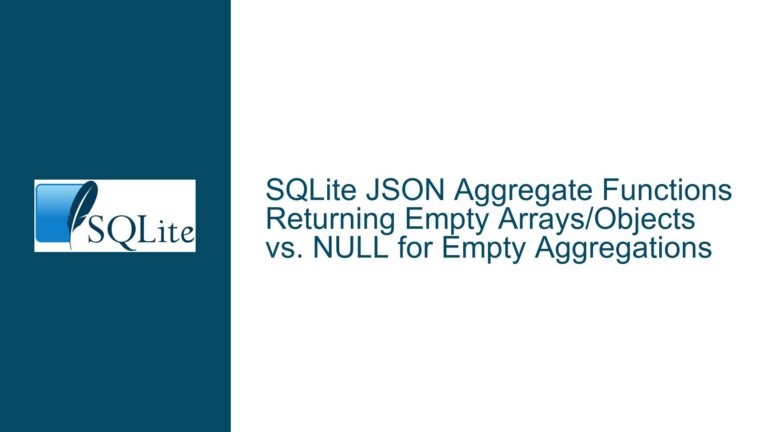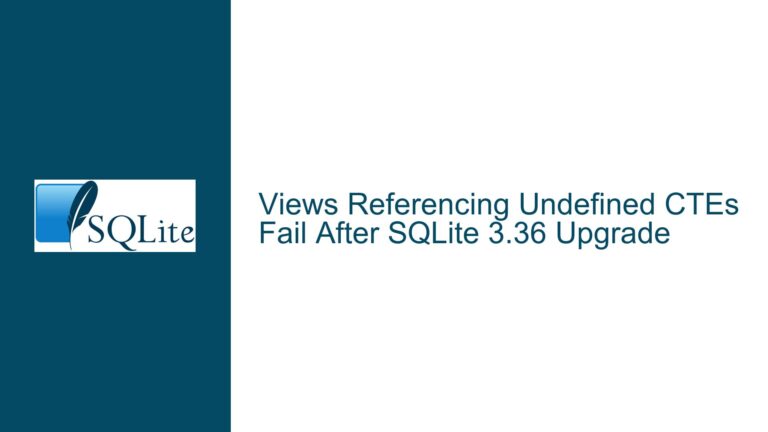Database Disk Image Malformed During SELECT in Concurrent Read-Write Operations
Issue Overview: Concurrent Read-Write Operations Leading to Database Corruption
The core issue revolves around a scenario where a SQLite database is being accessed concurrently by two processes: one process writes data to the database, while the other process performs read-only queries. As the volume of data being written increases, the read-only process encounters errors such as "database disk image is malformed" or "File opened that is not a database file." These errors manifest specifically when using a JDBC ResultSet to execute queries, but curiously, the same queries executed from the command line do not produce any errors. Additionally, running the PRAGMA integrity_check command returns no issues, indicating that the database file itself is not inherently corrupted.
This issue is particularly perplexing because SQLite is designed to handle concurrent access, albeit with certain limitations. The fact that the integrity check passes suggests that the database file is not permanently damaged, but the intermittent errors during read operations point to a problem with how the database is being accessed or managed during concurrent operations. The use of JDBC adds another layer of complexity, as it introduces potential issues related to the Java runtime environment, connection management, and result set handling.
The problem is further compounded by the lack of detailed context, such as the specific version of SQLite being used, the operating system, the programming language or wrapper, and the exact sequence of operations being performed. Without this information, it is challenging to pinpoint the exact cause of the issue. However, based on the symptoms described, it is clear that the problem lies at the intersection of concurrent database access, JDBC usage, and potentially the underlying file system or operating system behavior.
Possible Causes: Concurrency, JDBC, and File System Interactions
The issue of a malformed database disk image during concurrent read-write operations can be attributed to several potential causes, each of which must be carefully examined to determine the root of the problem.
1. Concurrent Access and Locking Mechanisms:
SQLite uses a file-based locking mechanism to manage concurrent access to the database. When one process writes to the database, it acquires a write lock, preventing other processes from writing or reading until the lock is released. However, SQLite allows multiple read operations to occur simultaneously, provided no write operation is in progress. If the write process is not properly managing its locks, or if the read process is attempting to access the database while a write operation is still in progress, it could lead to a situation where the read process encounters a partially written or inconsistent database state, resulting in the "database disk image is malformed" error.
2. JDBC Connection and ResultSet Handling:
The use of JDBC introduces additional complexity, as the JDBC driver may have its own mechanisms for managing database connections, transactions, and result sets. If the JDBC driver is not properly handling the connection to the SQLite database, or if it is not correctly managing the result set during concurrent operations, it could lead to errors. For example, if the JDBC driver attempts to read from the database while a write operation is in progress, it may encounter an inconsistent state, leading to the observed errors. Additionally, if the JDBC driver is not properly closing connections or releasing resources, it could lead to file corruption or other issues.
3. File System and Operating System Behavior:
The underlying file system and operating system can also play a role in this issue. SQLite relies on the file system to provide consistent and reliable access to the database file. If the file system is not properly handling concurrent access, or if there are issues with file locking or caching, it could lead to database corruption. For example, some file systems may not fully support the locking mechanisms used by SQLite, or they may introduce delays in writing data to disk, leading to inconsistencies between the in-memory and on-disk states of the database.
4. Database Configuration and PRAGMA Settings:
SQLite provides several PRAGMA settings that can affect how the database handles concurrent access, transactions, and file operations. If these settings are not properly configured, it could lead to issues during concurrent read-write operations. For example, the journal_mode PRAGMA controls how SQLite handles the rollback journal, which is used to ensure atomic transactions. If the journal mode is set to a value that is not appropriate for the use case, it could lead to database corruption or other issues.
5. Resource Limitations and System Load:
The issue may also be related to resource limitations or system load. If the system is under heavy load, or if there are insufficient resources (such as memory or disk I/O bandwidth) available, it could lead to delays in writing data to the database or in acquiring locks. These delays could, in turn, lead to inconsistencies between the read and write processes, resulting in the observed errors.
Troubleshooting Steps, Solutions & Fixes: Diagnosing and Resolving Concurrent Access Issues
To diagnose and resolve the issue of a malformed database disk image during concurrent read-write operations, the following steps should be taken:
1. Verify SQLite Version and Configuration:
The first step is to ensure that the correct version of SQLite is being used and that it is properly configured for the use case. Check the version of SQLite being used and compare it to the latest stable release to ensure that any known bugs or issues have been addressed. Additionally, review the PRAGMA settings being used, particularly those related to concurrency, transactions, and file handling. For example, consider setting the journal_mode to WAL (Write-Ahead Logging), which can improve concurrency and reduce the likelihood of database corruption.
2. Review JDBC Driver and Connection Management:
Next, review the JDBC driver being used and how it manages database connections and result sets. Ensure that the JDBC driver is up to date and that it is properly configured for use with SQLite. Check the connection string and any additional settings that may affect how the driver interacts with the database. Additionally, review the code that handles database connections, transactions, and result sets to ensure that connections are properly closed and that resources are released in a timely manner.
3. Implement Proper Locking and Transaction Management:
To prevent issues related to concurrent access, implement proper locking and transaction management in both the write and read processes. Ensure that the write process acquires and releases locks correctly, and that it commits transactions in a timely manner. Similarly, ensure that the read process respects the locks held by the write process and does not attempt to read from the database while a write operation is in progress. Consider using explicit transactions in the read process to ensure that it sees a consistent view of the database.
4. Monitor File System and Operating System Behavior:
Monitor the behavior of the file system and operating system to ensure that they are properly handling concurrent access to the database file. Check for any issues related to file locking, caching, or delays in writing data to disk. If necessary, consider using a different file system or operating system that is known to work well with SQLite.
5. Test Under Different Load Conditions:
Test the system under different load conditions to determine if the issue is related to resource limitations or system load. Increase the amount of data being written and read, and monitor the system for any signs of resource exhaustion or performance degradation. If the issue only occurs under heavy load, consider optimizing the system to reduce resource contention or increasing the available resources.
6. Create a Repeatable Test Case:
Finally, create a repeatable test case that reproduces the issue. This will help to isolate the problem and determine the exact sequence of operations that leads to the error. Use the test case to experiment with different configurations, settings, and code changes to determine what resolves the issue. Once the issue is resolved, use the test case to verify that the solution is effective and that the problem does not recur.
By following these steps, it should be possible to diagnose and resolve the issue of a malformed database disk image during concurrent read-write operations. The key is to carefully examine each potential cause, implement appropriate fixes, and thoroughly test the system to ensure that the issue is resolved.
